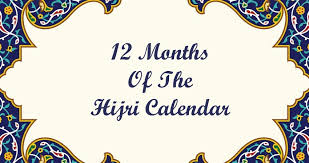Islamic Calendar: A Complete Guide to the Hijri System
The Islamic Calendar, also known as the Hijri Calendar, is a lunar-based system that Muslims worldwide use to determine important religious dates and observances. Unlike the Gregorian calendar, which is based on the solar cycle, the Islamic calendar follows the phases of the moon, making each year about 10 to 12 days shorter. This difference causes Islamic months and festivals to shift slightly every year relative to the Gregorian calendar.
Origins and History of the Islamic Calendar
The Islamic calendar was formally established in 638 CE during the caliphate of Umar ibn al-Khattab. Its starting point—known as the Hijrah—marks the Prophet Muhammad’s migration from Mecca to Medina in 622 CE, an event of major historical and religious significance.
For a detailed overview, you can visit the Britannica article on the Islamic Calendar.

Structure and Months
The Islamic calendar consists of 12 lunar months, each lasting 29 or 30 days depending on the moon’s sighting. These months total either 354 or 355 days, which is shorter than the 365 or 366 days of the Gregorian calendar.
The months are:
Muharram – A sacred month where fighting is traditionally forbidden.
Safar
Rabi’ al-Awwal – The month when the Prophet Muhammad was born.
Rabi’ al-Thani
Jumada al-Awwal
Jumada al-Thani
Rajab – One of the four sacred months.
Sha’ban
Ramadan – The holy month of fasting.
Shawwal – Begins with the festival of Eid al-Fitr.
Dhu al-Qi’dah
Dhu al-Hijjah – The month when Muslims perform the pilgrimage (Hajj) and celebrate Eid al-Adha.
Learn more about the significance of Ramadan in Islam.
Key Religious Observances
Ramadan: The ninth month, observed by fasting from dawn to sunset as an act of worship and spiritual reflection.
Eid al-Fitr: Celebrated at the end of Ramadan to mark the breaking of the fast.
Hajj: The pilgrimage to Mecca takes place during Dhu al-Hijjah, the twelfth month.
Eid al-Adha: Also in Dhu al-Hijjah, it commemorates Prophet Ibrahim’s willingness to sacrifice his son.
For a deeper understanding, check out our post on the Five Pillars of Islam.
Moon Sighting Tradition
Each month in the Islamic calendar begins with the sighting of the new crescent moon. This traditional practice means that some Islamic countries or communities may start months on different days depending on when the moon is seen locally.
Despite advances in astronomical calculations, many still prefer this traditional method to maintain community unity and religious authenticity.
Why the Islamic Calendar Matters Today
The Islamic calendar is much more than a way to mark time. It structures Muslim spiritual life and helps coordinate rituals, fasts, and festivals globally. Even though the Gregorian calendar is used for civil purposes in many Muslim-majority countries, the Hijri calendar remains essential for religious observance.
Summary
The Islamic Calendar is a lunar-based system rooted in history and spirituality. From the historic Hijrah to modern-day Ramadan and Hajj, it connects Muslims worldwide through a shared rhythm of worship and reflection.
Also, check my other blog on the significance of Muharram and Karbala: Muharram Month Significance & Karbala.
